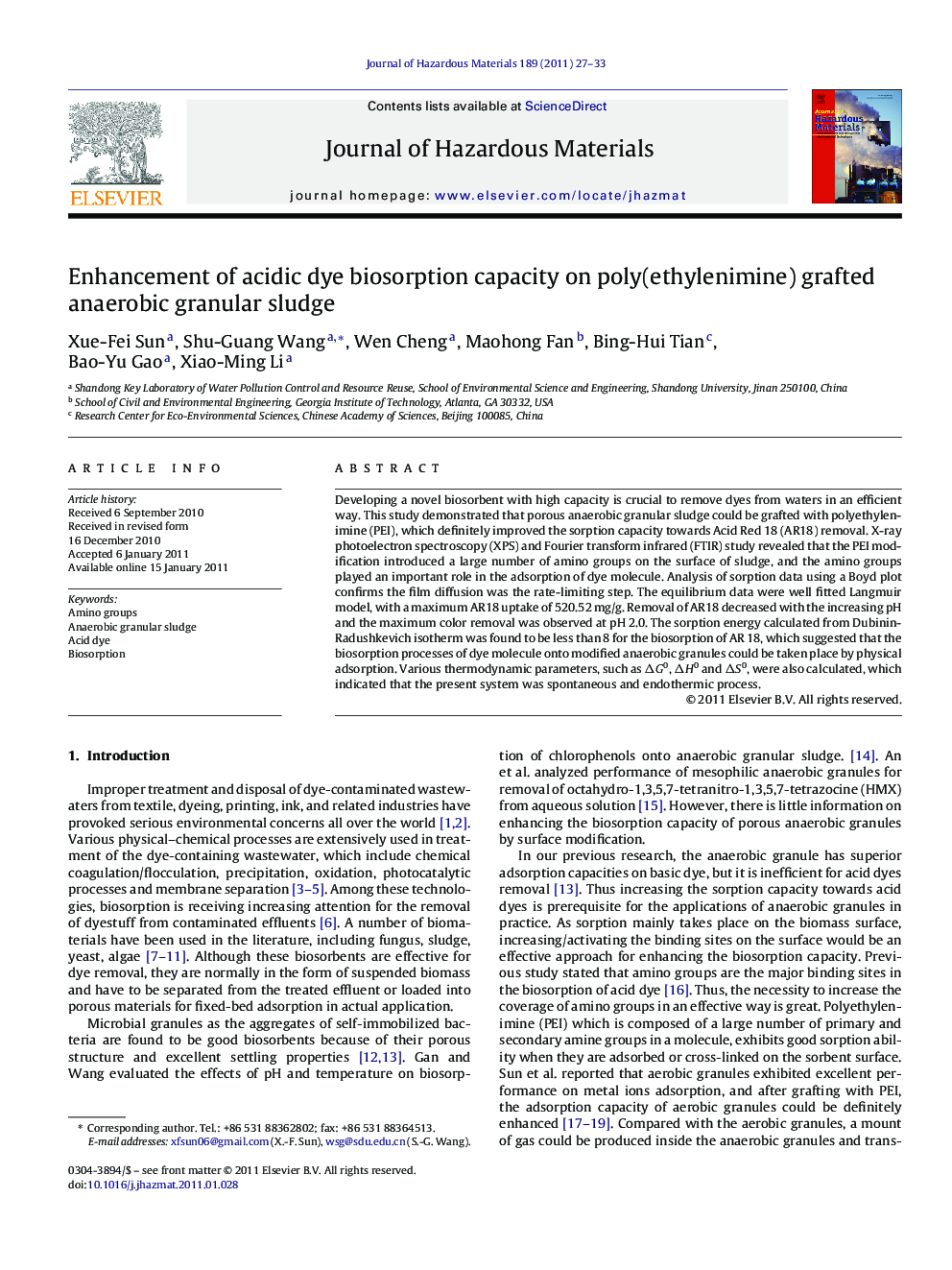| Article ID | Journal | Published Year | Pages | File Type |
|---|---|---|---|---|
| 579337 | Journal of Hazardous Materials | 2011 | 7 Pages |
Abstract
Developing a novel biosorbent with high capacity is crucial to remove dyes from waters in an efficient way. This study demonstrated that porous anaerobic granular sludge could be grafted with polyethylenimine (PEI), which definitely improved the sorption capacity towards Acid Red 18 (AR18) removal. X-ray photoelectron spectroscopy (XPS) and Fourier transform infrared (FTIR) study revealed that the PEI modification introduced a large number of amino groups on the surface of sludge, and the amino groups played an important role in the adsorption of dye molecule. Analysis of sorption data using a Boyd plot confirms the film diffusion was the rate-limiting step. The equilibrium data were well fitted Langmuir model, with a maximum AR18 uptake of 520.52Â mg/g. Removal of AR18 decreased with the increasing pH and the maximum color removal was observed at pH 2.0. The sorption energy calculated from Dubinin-Radushkevich isotherm was found to be less than 8 for the biosorption of AR 18, which suggested that the biosorption processes of dye molecule onto modified anaerobic granules could be taken place by physical adsorption. Various thermodynamic parameters, such as ÎG0, ÎH0 and ÎS0, were also calculated, which indicated that the present system was spontaneous and endothermic process.
Related Topics
Physical Sciences and Engineering
Chemical Engineering
Chemical Health and Safety
Authors
Xue-Fei Sun, Shu-Guang Wang, Wen Cheng, Maohong Fan, Bing-Hui Tian, Bao-Yu Gao, Xiao-Ming Li,
